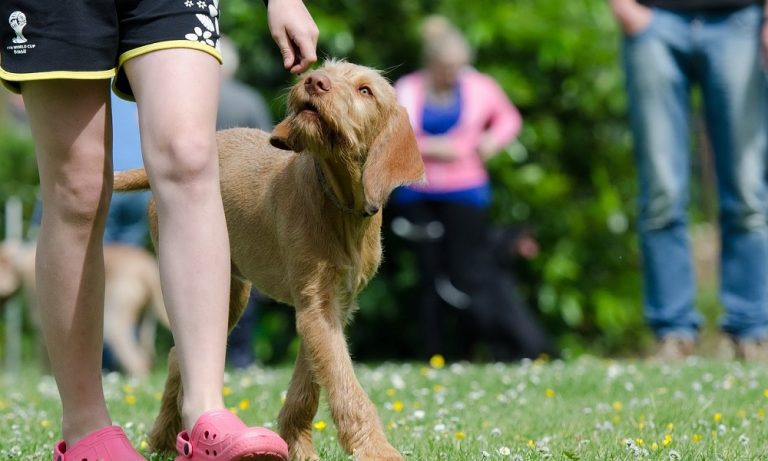How to Stop Dogs Chewing Skirting Boards?
To stop dogs from chewing skirting boards, provide them with chew toys and apply deterrents on the surfaces. Ensure they get plenty of exercise and mental stimulation to reduce boredom-related chewing.
As dog owners search for solutions to protect their home’s woodwork, the challenge of dogs chewing skirting boards emerges as a common issue. Redirecting this natural behavior is key to preserving the integrity of your household fixtures.
By offering alternatives such as durable chew toys and engaging them in regular exercise, dogs can channel their energy more constructively. The application of safe, bitter-tasting deterrents specifically designed for pets can also discourage them from gnawing on unsuitable items.
Addressing the root of the chewing habit, whether it’s anxiety, boredom, or lack of stimulation, can significantly reduce incidences of destructive chewing, ensuring that both your pet and your property remain in good shape.
Understanding The Behavior
Is your furry friend turning skirting boards into a chew toy? Knowing why dogs display this behavior is the key to stopping it. Our four-legged pals use their mouths to explore the world.
But there’s more behind the biting of your home’s trim than meets the eye. Let’s dive into the reasons your pooch may be chewing on skirting boards and what it means for their well-being.
Reasons For Chewing
Dogs chew for various reasons, each signaling unique needs or issues that we as pet owners need to address. Identifying the cause is Step One in solving the problem:
Teething: Puppies chew to relieve the discomfort of new teeth coming in.
Boredom: Lack of mental stimulation leads to destructive behaviors.
Anxiety: Chewing helps soothe nerves when dogs feel anxious.
Habit: Sometimes, chewing becomes a habitual activity for dogs.
Nutritional Deficiencies: Seeking out substances to supplement their diet can lead to inappropriate chewing.
Impact Of Chewing On Dogs
While many chew on objects here and there, constant chewing, especially on hard objects like skirting boards, can harm your dog’s health. Let’s review the potential impacts:
| Issue | Details |
|---|---|
| Dental Damage | Continuous chewing on hard surfaces can break teeth or damage gums. |
| Oral Injuries | Splinters or sharp edges can cause cuts and infections in the mouth. |
| Intestinal Blockages | Swallowed materials from the skirting can lead to dangerous blockages. |
| Toxicity | Some skirting boards may contain harmful chemicals or finishes. |
Training Techniques
Dogs often chew skirting boards out of boredom or anxiety. Training techniques are essential to keep your house intact. These methods are not only effective but also strengthen the bond between you and your furry friend.
Let’s dive into strategies that can redirect your dog’s chewing habit.
Positive Reinforcement
Celebrate good behavior with treats and praise. Whenever your dog chooses a toy over the skirting board, reward them immediately.
This association between ‘good chew’ and rewards will encourage them to avoid the no-go areas. Be consistent and patient with this approach.
Redirecting Behavior
Your dog needs to learn what’s okay to chew. When you catch them eyeing the skirting boards, firmly say “No,” and hand them a chew toy.
If they take the toy, give them a treat. This teaches them to look for appropriate items to satisfy their chewing urges.
| Behavior | Action | Result |
|---|---|---|
| Chews skirting board | Say "No," provide toy | Dog learns skirting board is bad |
| Takes the toy | Offer treat and praise | Dog prefers toy over board |
Environmental Changes
Dogs love to chew. That’s normal. But skirting boards are no chew toys! Here’s what you can do to keep your interior trim safe. Bear in mind, adjusting the environment plays a big role in curbing this behavior. With a few tweaks, you’ll protect your home and satisfy your pup’s need to gnaw. Let’s explore some of those changes now.
Providing Suitable Chew Toys
Chew toys are a dog’s best friend. They keep jaws busy and steer clear of furniture. Choose toys that match your dog’s size and chewing habits. Tough rubber toys, nylon bones, and chew rings are great options. Here’s a table listing types of chew toys:
| Toy Type | Best For |
|---|---|
| Rubber Toys | Strong Chewers |
| Nylon Bones | Teething Puppies |
| Chew Rings | Interactive Play |
Rotate toys regularly so your dog doesn’t get bored. A well-chewed toy is a victory for skirting boards everywhere!
Applying Bitter Spray
Bitter sprays are non-toxic and safe. They taste bad to dogs but keep furniture safe. Here’s how to apply them:
- Clean the skirting board area.
- Spray a small amount on an inconspicuous spot to test.
- If there’s no damage, apply the spray along the board.
- Reapply following the product’s instructions.
Remember, consistency is key. Keep applying as needed. Your dog will soon look elsewhere for fun. This leads to happy skirting boards and a happy home!
Physical And Mental Stimulation
Dogs often chew on skirting boards out of boredom or excess energy. Providing ample physical and mental stimulation can redirect this behavior toward a more appropriate outlet. Below are structured ways to keep your dog engaged and tire them out, both physically and mentally.
Regular Exercise
Exercise is crucial for a dog’s health. It prevents destructive behaviors by using up energy. Here’s how you can ensure your dog gets enough exercise:
- Daily walks: At least 30 minutes to an hour, twice a day.
- Playtime: Fetch, tug-of-war, or chase games in a secure area.
- Dog parks: Allow socialization and free play with other dogs.
- Agility training: Sets up an engaging physical challenge.
Mental Enrichment Activities
Mental stimulation is as important as physical exercise. A mentally stimulated dog is less likely to chew on skirting boards. Here are some activities to challenge your dog’s mind:
- Puzzle Toys: Fill them with treats to keep your dog busy.
- Training sessions: Short, daily sessions teach new tricks and commands.
- Hide and Seek: With treats or toys, it’s fun and mentally taxing.
- Snuffle Mats: Encourage natural foraging behaviors.
Combining physical activities with mental games will help maintain your dog’s overall well-being, keeping those skirting boards safe!
Professional Help
Is your dog turning your beautiful skirting boards into their chew toy? Professional help can save your home’s aesthetics and your dog’s health. It’s time to tackle the gnawing problem before it becomes a habit.
Consulting A Trainer
Dog trainers specialize in behavioral issues. They can teach your dog what’s off-limits. Understand how professional trainers address chewing problems:
- Positive reinforcement techniques reward your dog for good behavior.
- Identify triggers that lead to chewing and develop strategies to combat them.
- Trainers provide personalized advice based on your dog’s breed and temperament.
A trainer may suggest deterrents or toys to redirect the chewing. Choose a certified professional with experience in dealing with destructive behaviors.
Seeking Veterinary Advice
Sometimes, chewing stems from health issues. Your vet can uncover underlying problems. Consider these points when seeking veterinary advice:
- Discuss your dog’s diet and exercise regime with your vet.
- Nutritional deficiencies or pain might cause destructive chewing.
- Regular check-ups can prevent health-related chewing.
Make sure your dog gets the right care. A visit to the vet assures you’re not missing something serious.
Monitoring Progress
To curtail your dog’s skirting board chewing habit, a well-thought-out monitoring plan is indispensable. Gauging the effectiveness of strategies you’ve implemented ensures that your furry friend is on the right path to better behavior. Let’s dive into how to track improvements and fine-tune your approach.
Tracking Improvements
Observing and noting changes is key to understanding your dog’s progress. Create a log to mark instances of chewing. Include dates, times, and circumstances.
This record enables you to see patterns and improvements, providing a clear measure of success.
- Mark chew-free days on a calendar
- Take before and after photos of the skirting boards
- Note any behavioral changes in your dog
Adjusting Strategies
If you notice continued chewing despite your efforts, it’s time to revise your plan. Analyze the log and consider factors such as boredom, anxiety, or lack of exercise.
Then, tweak your strategy by implementing more engaging activities or seeking advice from a professional.
| Problem Identified | Action Taken | Outcome |
|---|---|---|
| Boredom | Introduce puzzle toys | Less chewing observed |
| Anxiety | Start behavior therapy | Improved overall demeanor |
Remember, consistency is crucial. Stay patient and committed to your dog’s chewing cessation journey. Positive reinforcement and regular re-evaluation of strategies will lead to a successful resolution for you and your loyal companion.
Frequently Asked Questions
Why Does My Dog Chew The Skirting Board?
Your dog may chew skirting boards due to teething, boredom, anxiety, or lack of exercise. Offer plenty of chew toys and ensure regular activity to curb this behavior.
What Can I Put On My Baseboards To Keep Dogs From Chewing?
Apply a bitter apple spray or hot sauce to your baseboards to deter dogs from chewing. Use non-toxic, pet-safe deterrents.
What Can I Put On Wood To Stop My Dog From Chewing?
Apply a dog-safe bitter apple spray or anti-chew deterrent on the wood. These non-toxic options discourage chewing by their unpleasant taste.
How Do I Get My Dog To Stop Eating Molding?
To stop your dog from eating molding, remove the temptation by blocking off access. Apply a safe deterrent on the molding. Consistently teach your dog the “leave it” command. Provide plenty of chewing alternatives. Consult a veterinarian for possible nutritional deficiencies or behavioral issues.
Why Do Dogs Chew Skirting Boards?
Dogs often chew on skirting boards due to boredom, anxiety, or teething in puppies. Providing appropriate chew toys can help redirect this behavior.
Conclusion
Stopping your dog from gnawing on skirting boards is manageable with a little patience and the right strategies. Simple solutions like bitter apple spray, increased exercise, and chew toys can work wonders.
Remember, consistent training reinforces good behavior. Protect your home and keep your furry friend happy by tackling the issue head-on.



